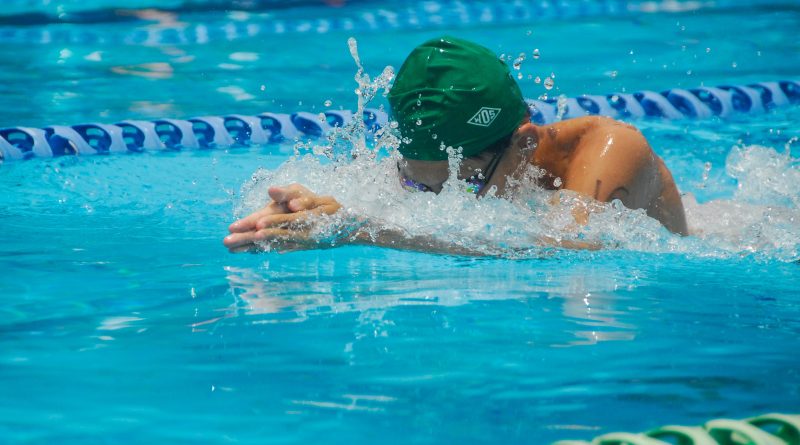Swimming – how to use your head in the water
Freeing the neck and back allows the ribcage and diaphragm to work comfortably, permitting us to breathe in an unrestricted way. This promotes greater natural buoyancy and allows us to control the rhythm of our inhalation and exhalation. A properly balanced body reduces the amount of effort required to prevent our legs and hips from dragging us down.
You can explore how buoyancy encourages a sense of good orientation by standing in calm water, submerged up to your chin. The pressure of the water supports the spine and allows you to stand without straining; your head free to pivot on the topmost vertebra.
The principle of good orientation shows once again that swimming requires us to be confident about putting our face in the water. Without this confidence, we’re likely to interfere with our natural head-neck-back relationship. Ask yourself, is it really possible to maintain good orientation if we swim with our heads held clear of the water? Perhaps it is, but only for short periods. Those who swim with their heads out of the water for long periods are subjecting their spines to damaging pressure and hampering the process of lengthening and widening. And people who regularly swim in this way usually complain of a stiff neck and aching back.
However, it’s not enough just to put your face in the water. In itself, this does not constitute good orientation. Even when the face is submerged below the water surface, the head can remain jammed back against the shoulder girdle.
But good orientation cannot occur without the neck muscles remaining free. This means that in the prone strokes (i.e. when we swim on our front) the head must be allowed to tilt forward under its own weight, leading to the lengthening and widening of the back and torso. Of course, it may be necessary (e.g. in a crowded pool) to raise the head up and look ahead from time to time, but this can and should be done in such a way that the elements of good orientation are preserved. And as the set of steps shown overleaf for Finding Your Feet illustrates, raising your head up is not the first step required for the body to stop moving forward in the water.



I have never been a fan of swimming in public pools, and I have started to research getting an inground swimming pool. Your site has come in handy. TY for the good info!